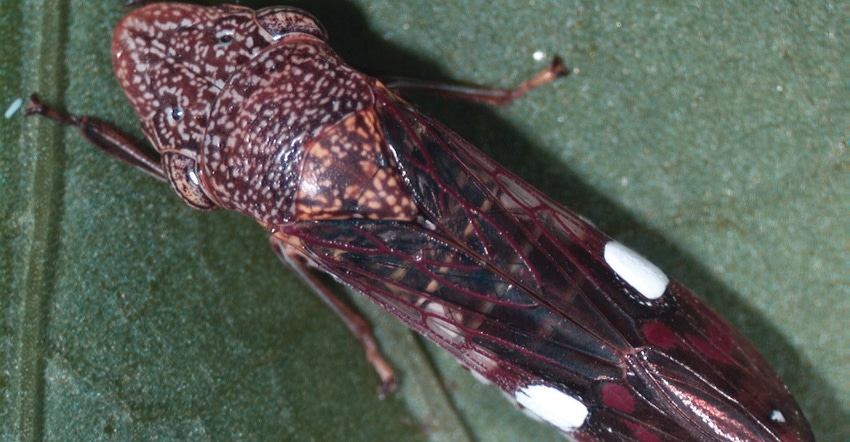
Among the last items to close out the previous growing year was a two-day Pierce’s Disease Research symposium focusing on the status of the bacterial infection transmitted in grapevines by the glassy winged sharpshooter and other bugs.
In a textbook example of understatement, the California Department of Food & Agriculture says simply: “Grapevines infected with PD can quickly become sick and die.”
One example of that PD/GWSS trail-of-destruction showed up in 2000 east of Bakersfield when sharpshooters were discovered near the citrus belt. Shortly thereafter, Anthony Vineyards, a 150 employee, $11 million grower/shipper of table grapes, purchased 320 acres of organic vineyards and began farming in rows separated by carpets of barley that attracted ladybugs to feed on aphids and other pests. Sharpshooters weren’t among those pests.
“While most of the grape growers in the area had always had a few infected vines, we began to notice a high incidence of Pierce’s disease,” reported Josh Polich, “a vine here, a vine there on a hundred acres. The concern was that growers needed to be more vigilant in removing the affected vines so the GWSS wouldn’t pick up the disease and move it around the thousands of acres in the neighborhood.
“Suddenly, in 2014, one 40-acre block of scarlet grapes started to show a lot of positives. We started marking and pulling those vines as fast as we could, initially pulling 400 vines, then another 1,200 the next year as things spread rapidly. Our 2015 production of 1,200 boxes to the acre dropped to a thousand and then down to 800 as we kept losing ground. Finally, at the end of 2017, just four years after discovery, we pulled that vineyard.”
Discussions were held about replanting, conversations that centered around economics. “It costs upwards of $2,000 an acre to remove with several thousands more to get things back into production. Just returning 40 acres could cost upwards of half a million dollars and sometimes it doesn’t make economic sense to gamble with that kind of money. Had we been conventional, we might have done it, but we decided not to expose ourselves anymore and move to another crop.”
Sprays applied
With 160 acres of organics out of 320 already pulled, foliar sprays were applied, but as Polich and John Kovacevich report: “Sharpshooters move very fast and weren’t going to stick around and wait for us.”
Efforts to replant with fresh stock were unsuccessful as new plantings had difficulty surviving. “Because of the loss of production and the awareness that we didn’t know how long the sharpshooter would stay in the area, we decided to switch out crops and plant citrus.”
Added Kovacevich: “With organic ranching, our toolbox is limited. With conventional growing, we would have other materials that might have better effect, things like insect growth regulators and the like, but being organic, we focused on botanical oils and plant nutrition to offset disease and pest pressure. It may not be the most quantitative to kill the pathogen, but it protects against GWSS and deters it.”
Organics also requires a fine tune on irrigation. “It’s a balance and we really dial in our irrigation to make sure we don’t have a stressed plant that makes a conducive environment for vectors to attack.”
About the Author(s)
You May Also Like




